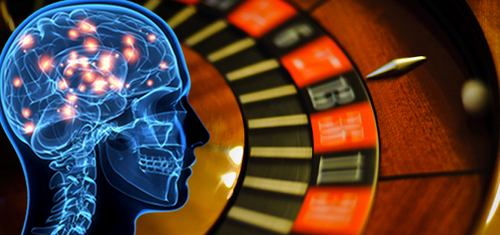 Researchers have discovered a further link between brain structure and a person’s willingness to take financial risks, which could lead to future treatments for problem gamblers.
Researchers have discovered a further link between brain structure and a person’s willingness to take financial risks, which could lead to future treatments for problem gamblers.
The study, published in the journal Neuron under the wordy title of White-Matter Tract Connecting Anterior Insula to Nucleus Accumbens Correlates with Reduced Preference for Positively Skewed Gambles, sought to determine why certain individuals showed “excessive attraction to gambles featuring small chances of winning large amounts.”
Researchers had previously identified two regions of the brain – the anterior insula and nucleus accumbens – which reflect opposite ends of the risk spectrum. The size of the connection between these ‘uh oh’ and ‘oh yay’ regions is different for every individual, which led researchers to wonder if there was a correlation between this connection and an individual’s willingness to take risks.
The study’s authors enlisted volunteers who engaged in a roulette gambling game using real money from inside an MRI chamber. Participants were presented with variable odds for each spin of the wheel, ranging from even odds, to higher odds of winning a small prize, smaller odds of losing big and vice versa. The participants each received $10 with which to wager and were told they could keep any winnings.
All participants occasionally made risky bets and during these wagers the ‘uh oh’ region of the brain showed less activity than the ‘oh yay’ region. However, the activity in the more excitable region was less pronounced in individuals who had a thicker sheath of fatty tissue connecting the two regions. The researchers suggested this stronger connection allowed the more cautious side to keep a tighter rein on the more excitable region.
The study’s authors hesitated before drawing sweeping conclusions from the results but suggested further study could lead to methods of decreasing problem gambling and other risky behavior in individuals with poor connections between the two brain regions.
The study builds on previous research that indicates problem gamblers are, like Lady Gaga, born that way. Studies have found problem gamblers are more prone to cognitive distortions, their brains produce fewer endorphins, are 8x more likely to have relatives with their own gambling problems and have difficulties limiting their involvement in any number of potentially dodgy habits.
The belief that problem gamblers are born rather than made also goes a long way toward explaining why the rate of problem gambling behavior either remains constant or actually decreases despite an increased range of gambling options in a given market.
